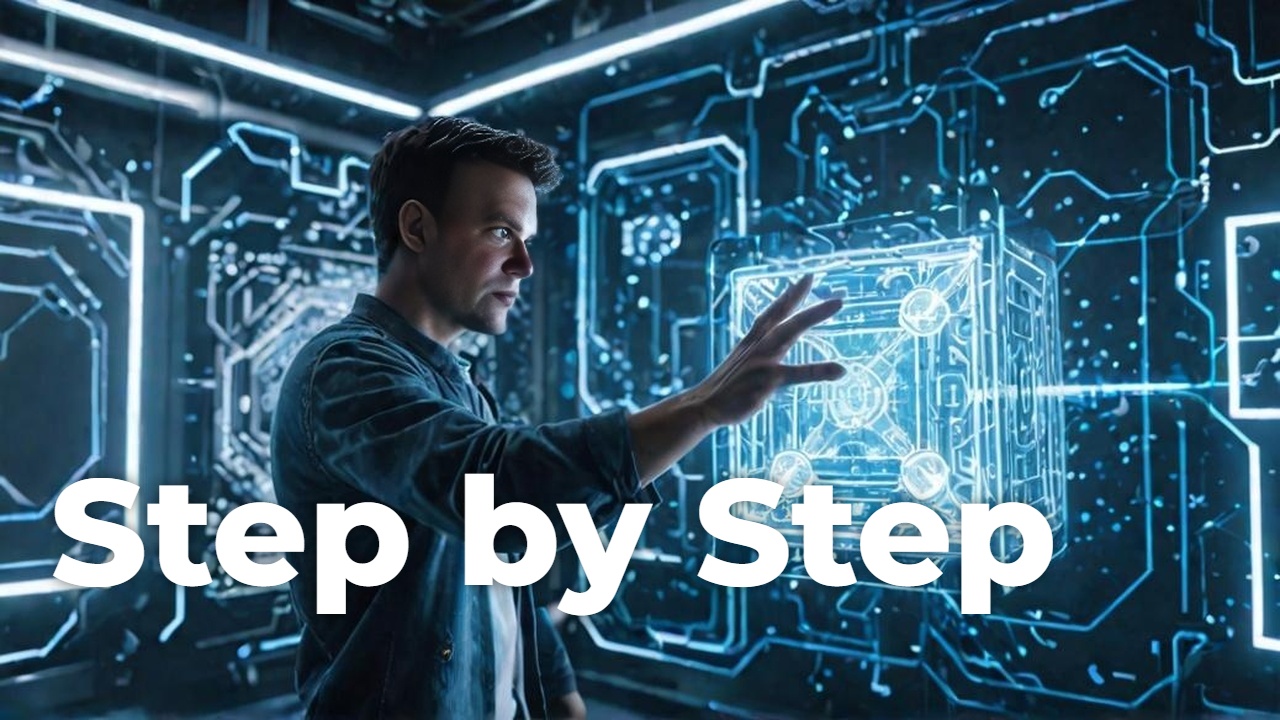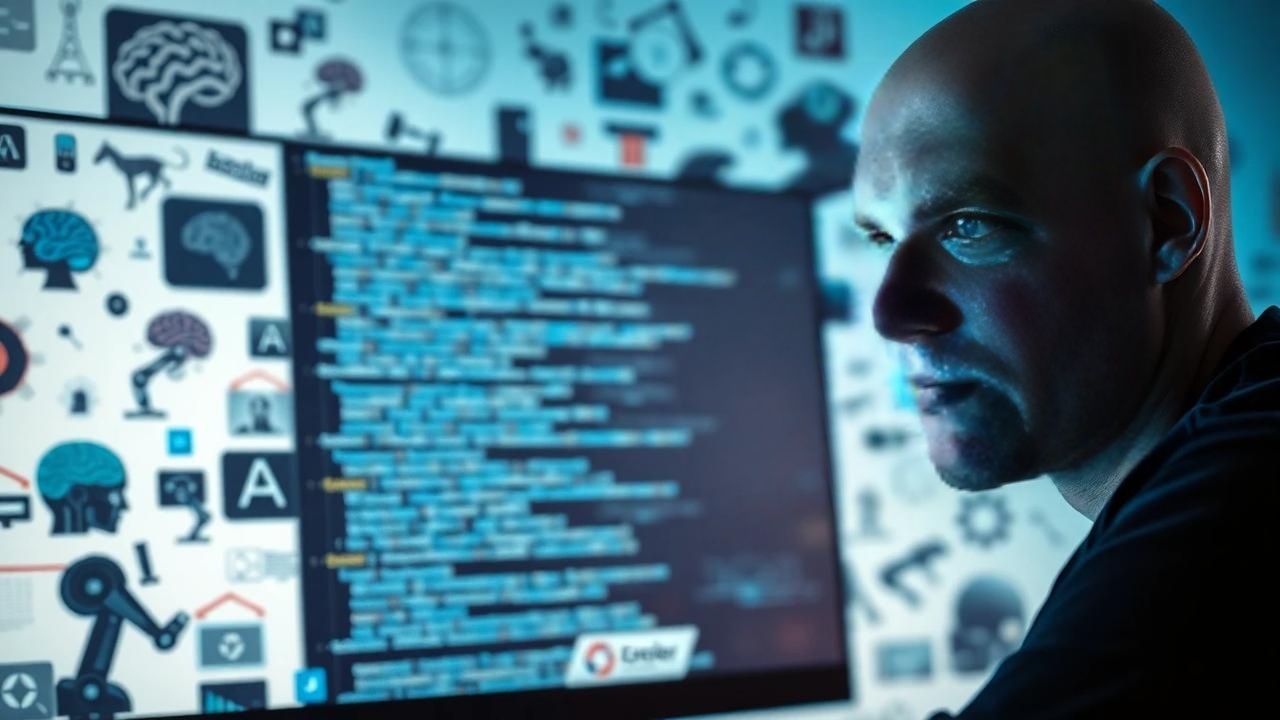Imagine crafting an AI agent from scratch, one that could revolutionize how you handle data or automate everyday tasks. Years ago, this might have seemed like an impossible feat, but today, I’m thrilled to say that anyone with a bit of curiosity can embark on this journey. In this blog, I’ll walk you through the entire process, starting from the rudiments of AI to the mastery of advanced techniques, helping you design, build, and train an AI agent tailored to your needs.
The Genesis of Artificial Intelligence
Understanding the Fundamental Concepts of AI
Artificial Intelligence, or AI, is a term that often conjures images of futuristic robots and self-driving cars. But what exactly is AI? In its simplest form, AI refers to the ability of a machine to perform tasks that would typically require human intelligence. These tasks include problem-solving, understanding language, recognizing patterns, and even playing games. AI is not just a single technology; it’s a collection of technologies working together to enable machines to sense, comprehend, and act.
Think of AI as the brain of a computer. It processes information, makes decisions, and learns from experience. But how does it do this? Through algorithms. Algorithms are sets of rules that tell the computer how to perform a task. They are the backbone of AI, allowing machines to learn from data and improve over time.
Difference Between AI, Machine Learning, and Deep Learning
Now, let’s dive into the differences between AI, machine learning, and deep learning. These terms are often used interchangeably, but they are not the same.
- AI: As mentioned, AI is the overarching concept of machines being able to carry out tasks in a way that we would consider “smart”.
- Machine Learning (ML): This is a subset of AI. It involves the use of algorithms and statistical models to enable machines to improve their performance on a task through experience. In other words, ML allows computers to learn from data without being explicitly programmed.
- Deep Learning: This is a further subset of ML. It uses neural networks with many layers (hence “deep”) to analyze various factors of data. Deep learning is what powers many of the most advanced AI applications today, like voice assistants and image recognition systems.
In 2006, deep learning began to gain prominence, revolutionizing the way we approach AI. It allowed for more complex and accurate models, leading to breakthroughs in fields like natural language processing and computer vision.
Historical Evolution and Current Trends in AI Landscape
AI has come a long way since its inception. It started as a theoretical concept in the mid-20th century, with pioneers like Alan Turing laying the groundwork for what would become a technological revolution. The 1950s and 60s saw the development of the first AI programs, which were capable of simple problem-solving and game playing.
Fast forward to the 2010s, and AI has been widely adopted across various industry sectors. From healthcare to finance, AI is transforming the way businesses operate. It’s no longer just about automating tasks; it’s about enhancing human capabilities and creating new opportunities.
Today, AI is at the forefront of technological innovation. It’s driving advancements in autonomous vehicles, personalized medicine, and smart cities. The possibilities are endless, and the pace of change is accelerating.
“AI is not just a technology; it’s a revolution.” – Elon Musk
Elon Musk’s words capture the essence of what AI represents. It’s not just about creating smarter machines; it’s about reshaping the world as we know it. But with great power comes great responsibility. As AI continues to evolve, we must consider the ethical implications and ensure that it benefits all of humanity.
Learning the basic concepts of artificial intelligence is crucial. Understanding what sets AI, machine learning, and deep learning apart is the first step in navigating this complex and exciting field. Whether you’re a beginner or an experienced developer, there’s always more to learn. So, let’s embrace the AI revolution and explore the possibilities it holds for the future.

Designing and Building Your AI Framework
Embarking on the journey to design and build your own AI framework can feel like stepping into a vast, uncharted territory. But fear not! With the right guidance and tools, you can navigate this landscape and create something truly remarkable. Let’s dive into the essentials of getting started.
1. Selecting the Right AI Project and Purpose
Choosing the right project is like picking the perfect travel destination. It should be a place that not only challenges you but also excites you. As Andrew Ng wisely said,
“Choose a project that not only challenges you but also excites you.”
This excitement will fuel your journey and keep you motivated through the inevitable bumps along the way.
Start by asking yourself: What problem do I want to solve? Is it a personal passion project or something that addresses a broader need? Once you have a clear goal, you can tailor your AI framework to meet those specific needs. Remember, the clearer your purpose, the more focused your development process will be.
2. Overview of Popular AI Frameworks and Libraries
Now that you’ve chosen your project, it’s time to select the right tools for the job. In the world of AI, frameworks and libraries are your best friends. They provide the building blocks you need to create your model.
Two of the most popular frameworks are TensorFlow and PyTorch. Both have their strengths and are widely used in the industry. But how do you choose between them?
- TensorFlow: Known for its flexibility and scalability, TensorFlow is a great choice if you’re looking to build complex models. It’s backed by Google, which means it’s constantly being updated and improved.
- PyTorch: If you’re a beginner, PyTorch might be more your speed. It’s known for its simplicity and ease of use. Plus, it’s favored by researchers for its dynamic computation graph, which makes it easier to debug.
Ultimately, the choice between TensorFlow and PyTorch depends on your project needs and personal preference. Both are excellent choices that can greatly influence your AI model’s success.
3. Initial Setup and Configuration for Your AI Model
With your project and framework selected, it’s time to set up your development environment. This step is crucial, as a well-configured environment can save you a lot of headaches down the road.
Here’s a step-by-step guide to get you started:
- Install Python: Most AI frameworks are built on Python, so make sure you have the latest version installed on your machine.
- Set Up a Virtual Environment: This helps keep your project dependencies organized and prevents conflicts with other projects.
- Install Your Chosen Framework: Whether it’s TensorFlow or PyTorch, follow the official installation guide to get it up and running.
- Install Additional Libraries: Depending on your project, you might need additional libraries like NumPy, Pandas, or Matplotlib for data manipulation and visualization.
Once your environment is set up, you’re ready to start building your AI model. This is where the real fun begins!
Remember, the key to a successful AI framework is choosing the right tools and setting clear goals. With these foundations in place, you’re well on your way to creating something amazing. So, what are you waiting for? Let’s get started on this exciting journey!
Training Your AI Model for Success
Have you ever wondered what it takes to train an AI model for success? It’s a journey, much like raising a child. You start with the basics, nurture it with the right data, and watch it grow into something intelligent and capable. Let’s dive into the world of AI training, where data is the lifeblood and algorithms are the brains.
Data Preparation and Preprocessing Techniques
Imagine trying to build a house without a solid foundation. That’s what training an AI model is like without proper data preparation. In my experience, the quality of your data can make or break your AI project. In fact, did you know that 75% of AI project success depends on data quality? It’s true!
Data preparation involves cleaning, organizing, and transforming raw data into a format that your AI model can understand. Think of it as tidying up your room before guests arrive. You want everything in its place, right?
Preprocessing techniques include:
- Data Cleaning: Removing duplicates, filling in missing values, and correcting errors.
- Normalization: Scaling data to a uniform range, ensuring consistency.
- Feature Selection: Picking the most relevant data points to improve model efficiency.
Remember, as Fei-Fei Li wisely said,
“Training a model is as much about the data as it is about the algorithm.”
So, let’s treat our data with the respect it deserves.
Training the AI Model with Large Datasets
Once your data is ready, it’s time to train your AI model. Picture this: you’re a coach, and your AI is the athlete. You need to provide it with the right exercises to improve its performance. This is where large datasets come into play.
Training with large datasets allows your AI model to learn from a diverse range of examples. It’s like giving your athlete access to a variety of training equipment. The more it practices, the better it gets.
However, training with large datasets isn’t without challenges. It requires significant computational power and time. But fear not! With the right strategies, you can overcome these hurdles:
- Batch Processing: Break your dataset into smaller batches to manage memory usage.
- Parallel Processing: Use multiple processors to speed up training.
- Regularization: Prevent overfitting by adding constraints to your model.
Training an AI model is a marathon, not a sprint. Patience and perseverance are key.
Evaluating and Fine-Tuning Your AI Agent
You’ve trained your AI model, but the journey doesn’t end there. It’s time to evaluate and fine-tune it. Think of this phase as a feedback loop, where you test your model’s performance and make necessary adjustments.
Evaluation involves assessing your model’s accuracy, precision, and recall. You want to ensure it’s making the right decisions. If not, it’s back to the drawing board.
Fine-tuning is like polishing a diamond. You refine your model’s parameters to enhance its performance. This might involve tweaking the learning rate, adjusting the number of layers, or experimenting with different algorithms.
Remember, optimization is an ongoing process. Your AI model will continue to learn and improve over time. It’s like watching a child grow and develop new skills.
Conclusion
Training an AI model for success is a rewarding journey. It starts with meticulous data preparation, where clean and relevant data lay the groundwork. Training with large datasets is the next step, allowing your model to learn from a wide array of examples. Finally, evaluating and fine-tuning your AI agent ensures it performs at its best.
Throughout this process, remember that data is the heart of your AI model. As Fei-Fei Li aptly put it, “Training a model is as much about the data as it is about the algorithm.” By embracing this mindset, you’re well on your way to creating an AI model that not only meets but exceeds expectations.
So, are you ready to embark on this exciting journey? With the right tools and techniques, you can train your AI model for success and watch it thrive in the ever-evolving world of artificial intelligence.
TL;DR: Learn the essentials of creating your custom AI agent from scratch and explore its potential across various tasks.

